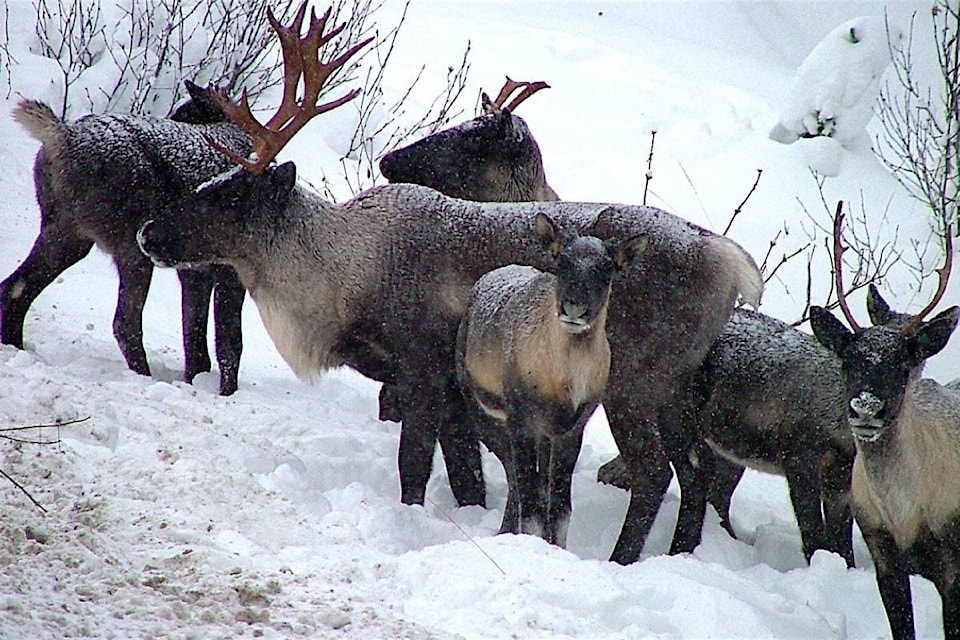Re: Wolf kill, not backcountry bans, saving caribou (B.C. Views, Oct. 13)
Killing wolves has been the “white man’s way” since we invaded First Nations’ territories prior to and after 1867.
Wolves are predators, caribou are prey, but recent documentaries by researchers have shown wolves to have a beneficial impact on more than prey numbers. Their activity affects the environment in ways that short-sighted hunters and biologists could not perceive.
Those who study wolves probably have conflicting information than those who study caribou.
Patrick Longworth, Penticton
• • •
The mountain caribou saga drags on with each new attempt by a fresh batch of bio-miracle-workers determined to reverse the inevitable.
The animals are able to exist in areas where snow is deep and dense enough to support them as they go from one feeding site to the next in search of arboreal lichens that are their primary source of food in winter.
Deer, elk, moose, wolves and cougars do not occupy this environment in winter, while grizzly bears do, they are not a threat when hibernating.
This particular caribou subspecies are nivaphiles (snow-lovers) and able to exist where the others, being nivaphobes (snow-haters) cannot. Wolves do not follow snowmobile tracks because they don’t exist in the deep snow environment in winter!
Therefore, Conservation Officers are not protecting mountain caribou, but they are preventing riders from enjoying the “steep and the deep” under the pretext of protecting the environment.
Ken Sumanik MSc (Zoology), retired B.C. government big game and habitat biologist, Richmond
• • •
I almost spit my coffee out when I read the quote “Caribou are declining in Wells Gray Provincial Park….where there has been no modern-day industrial disturbance.” The Wells Gray caribou herd’s range extends far beyond Wells Gray park.
I just got back from an expedition to core critical habitat of the Wells Gray herd, where I found more than 500 CFL football fields being logged just outside the park. This logging began in April, within core critical habitat.
I don’t think it’s rocket science to understand that for a species to survive, they need habitat. Of course, putting them in a pen and killing their predators will probably achieve an increase in caribou numbers, but this is less like recovery and more like a zoo.
54 identified caribou herds in B.C. are intensively studied, with population falling even in parks and protected areas #bcpoli #bcleg pic.twitter.com/jia8hvYcZu
— Tom Fletcher (@tomfletcherbc) September 18, 2019
Recovery means self-sustaining populations, where human influence is not needed. The over-reliance on wolf culls and maternity pens without protecting sufficient habitat will never achieve self-sustaining populations in the long run.
I’ve also been to the habitat of the South Selkirk herd. The amount of linear disturbance and resource extraction is immense. Yes, there were backcountry signs saying something like “caribou habitat stay out.” These signs were covered in bullet holes and signs on top of the ministry signs that said “snowmobiling closure not the answer.” Followed by snowmobile tracks into habitat which was supposed to be off limits.
Charlotte Dawe, conservation campaigner, Wilderness Committee, Vancouver
